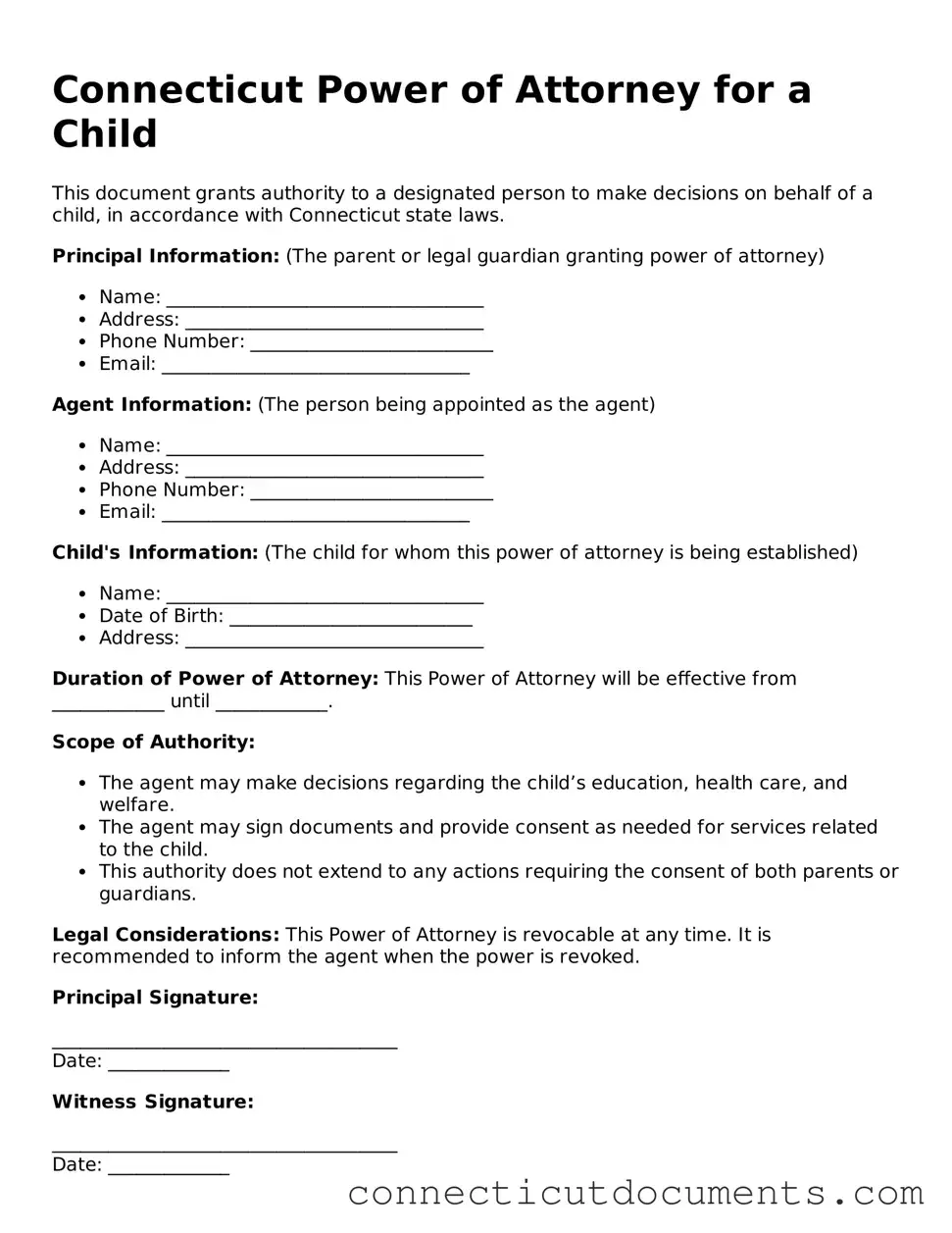What is a Power of Attorney for a Child in Connecticut?
A Power of Attorney for a Child in Connecticut is a legal document that allows a parent or guardian to grant another adult the authority to make decisions on behalf of their child. This can include decisions related to education, healthcare, and general welfare. It is often used when parents are unavailable, such as during travel or extended absences.
Who can serve as an agent under this Power of Attorney?
Any adult can serve as an agent, provided they are trustworthy and responsible. This could be a relative, friend, or neighbor. It is important to choose someone who will act in the best interest of the child and can handle the responsibilities that come with the role.
What decisions can the agent make on behalf of the child?
The agent can make various decisions, including those related to education, medical care, and general welfare. However, the specific powers granted can be tailored to the needs of the child and the preferences of the parent or guardian. It is essential to clearly outline these powers in the document.
How long does the Power of Attorney for a Child remain in effect?
The Power of Attorney for a Child remains in effect until the specified expiration date in the document, or until it is revoked by the parent or guardian. If no expiration date is provided, the authority typically lasts until the child reaches the age of 18.
Do I need to have the Power of Attorney notarized?
Yes, the Power of Attorney for a Child must be notarized to be legally valid in Connecticut. This ensures that the document is authentic and that the signatures are genuine. It is advisable to have a notary public present when signing the document.
Can I revoke the Power of Attorney for a Child once it is established?
Yes, you can revoke the Power of Attorney at any time. To do so, a written notice of revocation should be provided to the agent and, if necessary, to any institutions or individuals who have been informed of the Power of Attorney. This ensures that everyone is aware of the change.
Is a Power of Attorney for a Child the same as guardianship?
No, a Power of Attorney for a Child is not the same as guardianship. Guardianship is a legal process that gives an individual permanent authority over a child’s care and decisions. In contrast, a Power of Attorney is typically temporary and can be limited to specific areas of decision-making.
What should I consider before creating a Power of Attorney for my child?
Before creating a Power of Attorney, consider the person you want to appoint as your agent. Ensure they are reliable and capable of making decisions in your child’s best interest. Additionally, think about the specific powers you want to grant and any limitations you may want to impose.
Where can I obtain a Power of Attorney for a Child form in Connecticut?
Power of Attorney for a Child forms can typically be obtained from legal stationery stores, online legal service providers, or through an attorney. It is important to ensure that the form complies with Connecticut state laws to ensure its validity.
